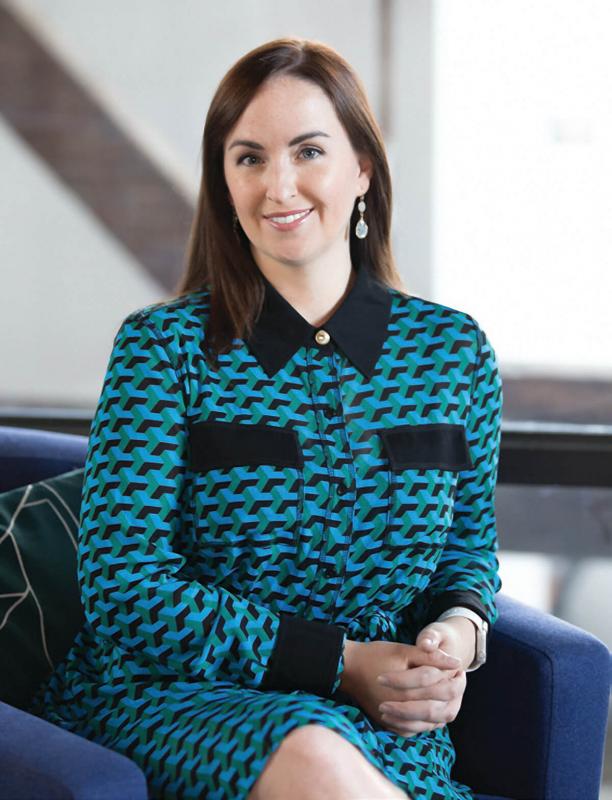
Jess Gartner (Baltimore ’09): Revolutionizing Billions of Dollars in Education Spending
President and CEO of Allovue
Social entrepreneur Jess Gartner (Baltimore ’09) started Allovue, a Baltimore-based education finance firm, because she wanted to solve a “monstrous” problem: helping districts and state education departments better manage their budgets, with an equity lens.
“At face value, it seems logical,” Gartner says, rat- tling off a hypothetical budget like it is an algebraic equation: District A wants a ratio of Y students to one teacher, so they divide enrollment and full-time employees. “Multiply by X and that’s your budget,” she says.
There’s just one problem. “Kids are not widgets,” says Gartner. “Not all kids have the same needs. The costs of educating those kids at an appropriate level are not the same. The cost of teachers is not the same.”
Gartner sounds like a former math teacher, but she spent three years as a humanities teacher before leaving the classroom with plans to join an ed-tech nonprofit, the Digital Harbor Foundation, founded by TFA alum Andrew Coy (Baltimore ’09).
Fate had other plans, and while Jess found a marketing job, she desperately missed education. She spent her weekends with Coy and other social entrepreneurs participating in ‘hackathons,’ weekend-long innovation brainstorms to solve problems in the education technology space. 
“The problem I kept coming back to was budgeting and resource equity. I felt like there was something to fix there.”
So, in 2013, Gartner quit her marketing job, cashed out her tiny pension, rented rooms to cover the mortgage, and began problem-solving. Fast forward eight years, the firm has raised $15 million and now works with major school districts and state education offices across the country. But Gartner says she has a long way to go, convincing not just funders, but school boards, to take on a slow and unsexy administrative problem that can’t be easily resolved on the typical five-year venture-capitalist timeline.
And, she notes: It requires leaders who are willing to shine a light on potential problems within their existing budgets. Her modest aim would ultimately rewire $750 billion of education spending, a big chunk of which—upwards of $1 billion by Gartner’s estimates—is inequitably distributed.
“Ultimately, I want to build a K-12 centric resource allocation operating system that helps districts and schools make resource decisions about money, people, time and what they buy in a very strategic and equitable way,” she says. “So, it’s going to take a while.”